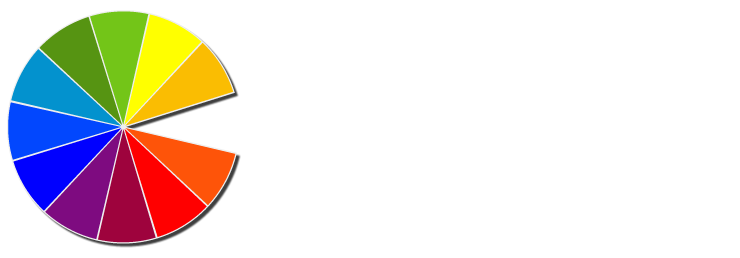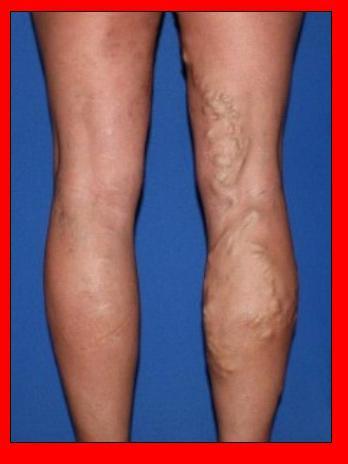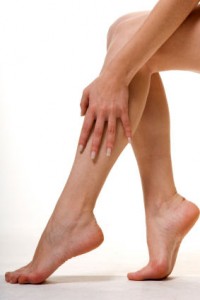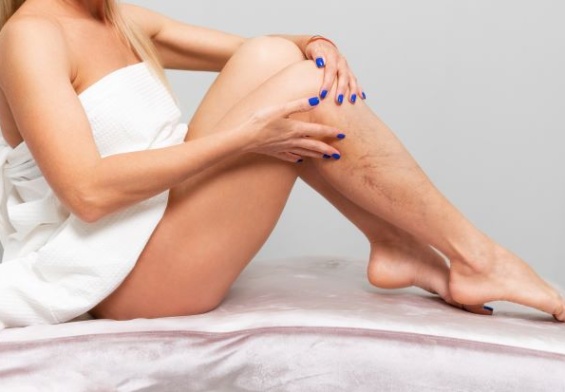Ever notice those large, twisted veins on your legs?
Those are varicose veins, and they develop when blood pools in the veins instead of flowing back to the heart. Over time, this causes the veins to stretch, bulge, and become more visible beneath the skin.
Varicose veins are a common condition, affecting millions of adults across the country. They are especially common among women and people who spend long hours on their feet. For many, varicose veins cause discomfort, swelling, or cosmetic concerns. For some people, varicose veins affect confidence or willingness to wear certain clothing.
Today, there are many treatment options available. They range from medical procedures to lifestyle changes and integrative wellness care. If you’re seeking a holistic approach to managing varicose vein symptoms, explore a holistic center near you.
In this post, we’ll answer some of the most common questions about varicose veins. We’re going to cover what causes them, how they’re treated, and when to speak with a healthcare provider.
What Are Varicose Veins?
Varicose veins are enlarged, twisted veins that appear beneath the surface of the skin. They are most common in the legs, where blood must travel upward against gravity to return to the heart. When blood collects in these veins, they stretch and become swollen. This often gives them a blue or purple appearance.
Varicose veins are part of a broader category of venous conditions known as chronic venous disease. This includes milder forms, like spider veins, and more advanced stages involving skin changes, swelling, or venous ulcers. Varicose veins fall in the middle of this range, causing cosmetic concerns and physical discomfort.
Varicose veins don’t cause serious problems for most people. Others may experience aching, heaviness, or swelling in their legs. In some cases, untreated varicose veins can lead to complications that affect circulation and skin health.
What Causes Varicose Veins?
Several factors can contribute to the development of varicose veins. Some people inherit a genetic tendency toward weak vein walls or faulty valves. Others develop them over time due to lifestyle or health factors. Common causes of varicose veins include:
- Weak or damaged valves inside the veins
- Family history of vein problems
- Pregnancy, which increases pressure on the veins
- Obesity, which can strain the veins in the legs
- Prolonged standing or sitting, which makes it harder for blood to flow upward
- Aging, as vein walls and valves weaken over time
These factors can increase pressure in the leg veins, causing blood to pool and the veins to stretch. Recognizing these causes can help you understand your risk. Then, you can take steps to support better vein health.
What Are the Symptoms of Varicose Veins?
The symptoms of varicose veins range from mild discomfort to more noticeable, bothersome effects. Some people experience physical symptoms, while others are more concerned with how the veins look. Common symptoms of varicose veins include:
- Visible, bulging veins that look twisted or rope-like
- Blue or purple veins close to the surface of the skin
- Aching, heaviness, or a tired feeling in the legs
- Swelling around the ankles or lower legs
- Burning, itching, or throbbing near the affected veins
- Leg cramps or restlessness, especially at night
- Skin changes such as dryness, discoloration, or thickening
- Open sores or ulcers near the ankles in advanced cases
If you notice these symptoms, it’s a good idea to consult a healthcare provider. Doubly so if they’re getting worse over time. Early evaluation can help you find relief and prevent complications.
Are Varicose Veins Dangerous?
For most people, varicose veins are just a cosmetic issue. But, they can signal problems with blood flow and may lead to complications if left untreated in some cases.
One possible complication is chronic swelling in the lower legs. When blood pools in the veins, fluid can build up in surrounding tissues. This causes persistent swelling or skin irritation.
Varicose veins can also increase the risk of skin changes. The skin around the affected veins may become dry, discolored, or thickened. In advanced cases, slow-healing sores or ulcers may form.
There is also a risk of blood clots developing in the veins. Superficial clots, which form close to the skin, can cause pain and inflammation. In rare cases, varicose veins may cause a deeper blood clot, known as deep vein thrombosis (DVT). DVT is uncommon in people with varicose veins, but it’s a serious condition that requires immediate medical attention.
It’s important to pay attention to symptoms and speak with a healthcare provider if they worsen.
How Are Varicose Veins Diagnosed?
Diagnosing varicose veins often starts with a physical exam. A healthcare provider will check your legs for swelling, bulging veins, or skin changes. They may also ask about any symptoms you’ve experienced.
Your provider may recommend an ultrasound. This noninvasive test uses sound waves to show how blood is flowing through your veins and how the valves are working. It can also help detect any clots.
Your provider uses this information to decide how to proceed.
What Are the Treatment Options for Varicose Veins?
Treatment for varicose veins depends on how severe they are and how much they affect your daily life. Lifestyle changes can often help manage symptoms. These include regular exercise, elevating the legs, and wearing compression stockings.
If these measures aren’t enough, minimally invasive procedures may be recommended. These include:
- Sclerotherapy: An injection closes small veins.
- Laser or radiofrequency ablation: Heat seals larger veins.
- Phlebectomy: Small incisions remove surface veins.
For advanced cases, surgery may be necessary. Vein stripping and ligation removes the affected veins to restore blood flow and relieve symptoms.
Some people also look for natural ways to support vein health. These people often look into local holistic health resources to complement their existing care.
Can Varicose Veins Come Back After Treatment?
Varicose veins can return after treatment, although the risk varies. Genetics, lifestyle habits, and the severity of vein disease all influence whether new veins will develop.
Some procedures, like vein stripping, remove the affected veins completely, reducing the chance of recurrence. Minimally invasive treatments like sclerotherapy and ablation can be effective but may need follow-up treatments.
Staying active, managing weight, and avoiding prolonged standing or sitting can help lower the risk of new varicose veins.
Can Holistic Approaches Help with Varicose Veins?
Holistic care can support varicose vein management, especially alongside medical treatment. While these approaches won’t remove varicose veins, they may help ease symptoms and promote better circulation.
Many people enjoy exercise, stretching, and yoga to improve blood flow. Maintaining a healthy weight and balanced diet can reduce strain on the veins. Some holistic centers offer services like lifestyle coaching, movement therapy, or wellness plans to support vein health.
When looking for a holistic approach to vein health, ask about integrative care options at wellness centers in your area to support medical treatments.
Varicose Veins FAQs
Do varicose veins go away on their own?
Varicose veins usually don’t go away without treatment. Lifestyle changes help manage symptoms, but the veins themselves will remain unless treated.
Are varicose veins only a cosmetic problem?
While many people seek treatment for cosmetic reasons, varicose veins can also cause discomfort, swelling, and lead to complications if left untreated.
Can I prevent varicose veins?
You may not be able to prevent them, but regular exercise, maintaining a healthy weight, and avoiding long periods of standing or sitting can lower your risk.
Is treatment for varicose veins painful?
Most modern treatments are minimally invasive and cause little discomfort. Your healthcare provider can explain what to expect based on the treatment you choose.
When to Seek Help
Varicose veins are common, and for many people, they cause little more than cosmetic concern. But, if you notice aching, swelling, skin changes, or sores on your legs, speak with a healthcare provider. Early evaluation can help prevent the condition from getting worse and reduce the risk of complications.
You should also seek medical advice if your symptoms interfere with daily activities or if leg swelling and discomfort don’t improve. Treatment options range from lifestyle changes to medical procedures, depending on your symptoms and health.
If you’re exploring natural ways to manage your symptoms, a holistic center can help you build healthy habits that support your circulation and wellness. Whether you want relief from discomfort or want to improve the appearance of your legs, knowing your options is the first step.
Varicose veins are treatable, and you don’t have to manage them alone. Talk with a healthcare provider or a qualified wellness professional to create a plan that works for you.
Resources
https://medlineplus.gov/ency/article/007395.htm
https://medlineplus.gov/ency/article/001109.htm
https://my.clevelandclinic.org/health/treatments/17614-venous-disease-vein-ligation–stripping




